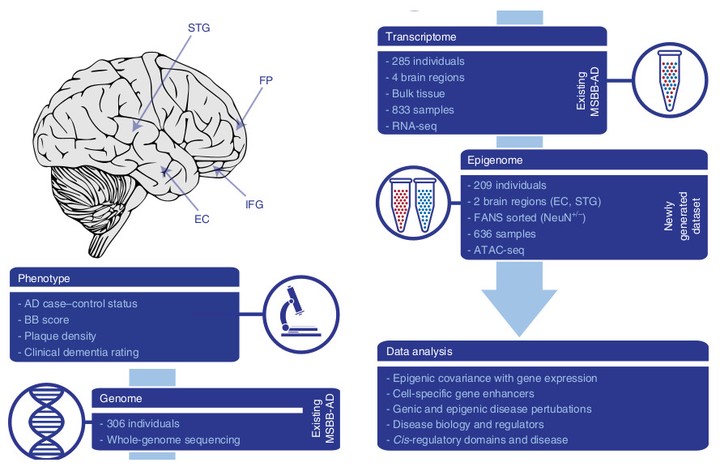The three-dimensional landscape of cortical chromatin accessibility in Alzheimer’s disease

Abstract
To characterize the dysregulation of chromatin accessibility in Alzheimer’s disease (AD), we generated 636 ATAC-seq libraries from neuronal and nonneuronal nuclei isolated from the superior temporal gyrus and entorhinal cortex of 153 AD cases and 56 controls. By analyzing a total of ~20 billion read pairs, we expanded the repertoire of known open chromatin regions (OCRs) in the human brain and identified cell-type-specific enhancer–promoter interactions. We show that interindividual variability in OCRs can be leveraged to identify cis-regulatory domains (CRDs) that capture the three-dimensional structure of the genome (3D genome). We identified AD-associated effects on chromatin accessibility, the 3D genome and transcription factor (TF) regulatory networks. For one of the most AD-perturbed TFs, USF2, we validated its regulatory effect on lysosomal genes. Overall, we applied a systematic approach to understanding the role of the 3D genome in AD. We provide all data as an online resource for widespread community-based analysis.